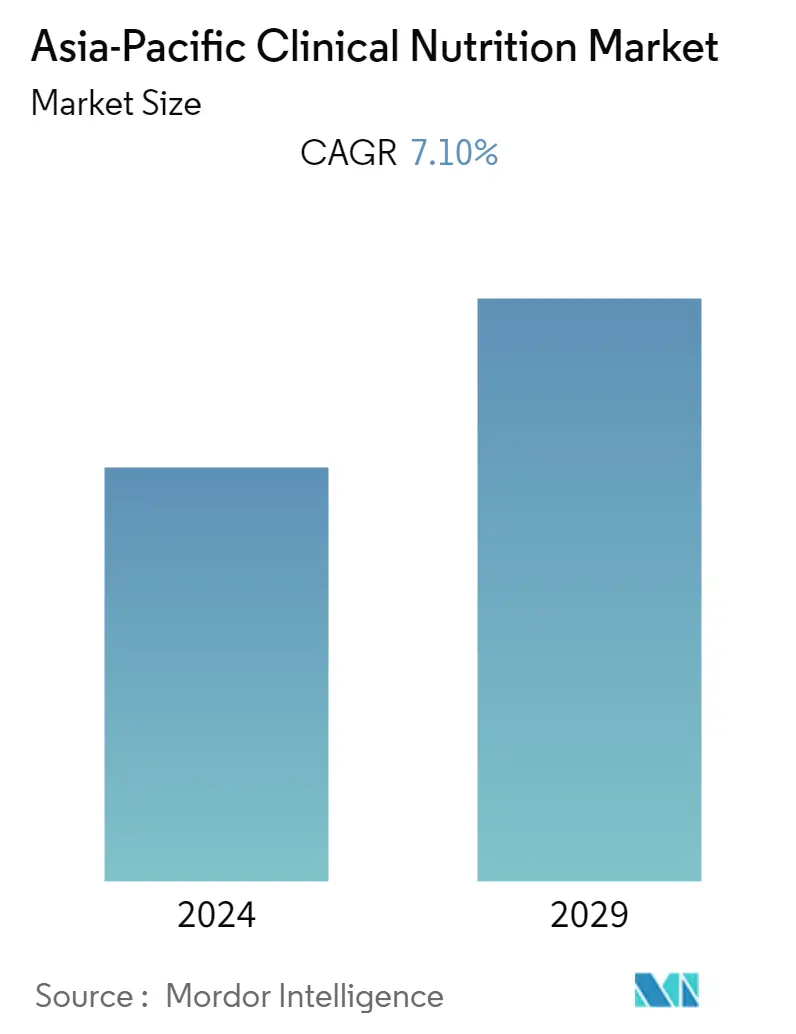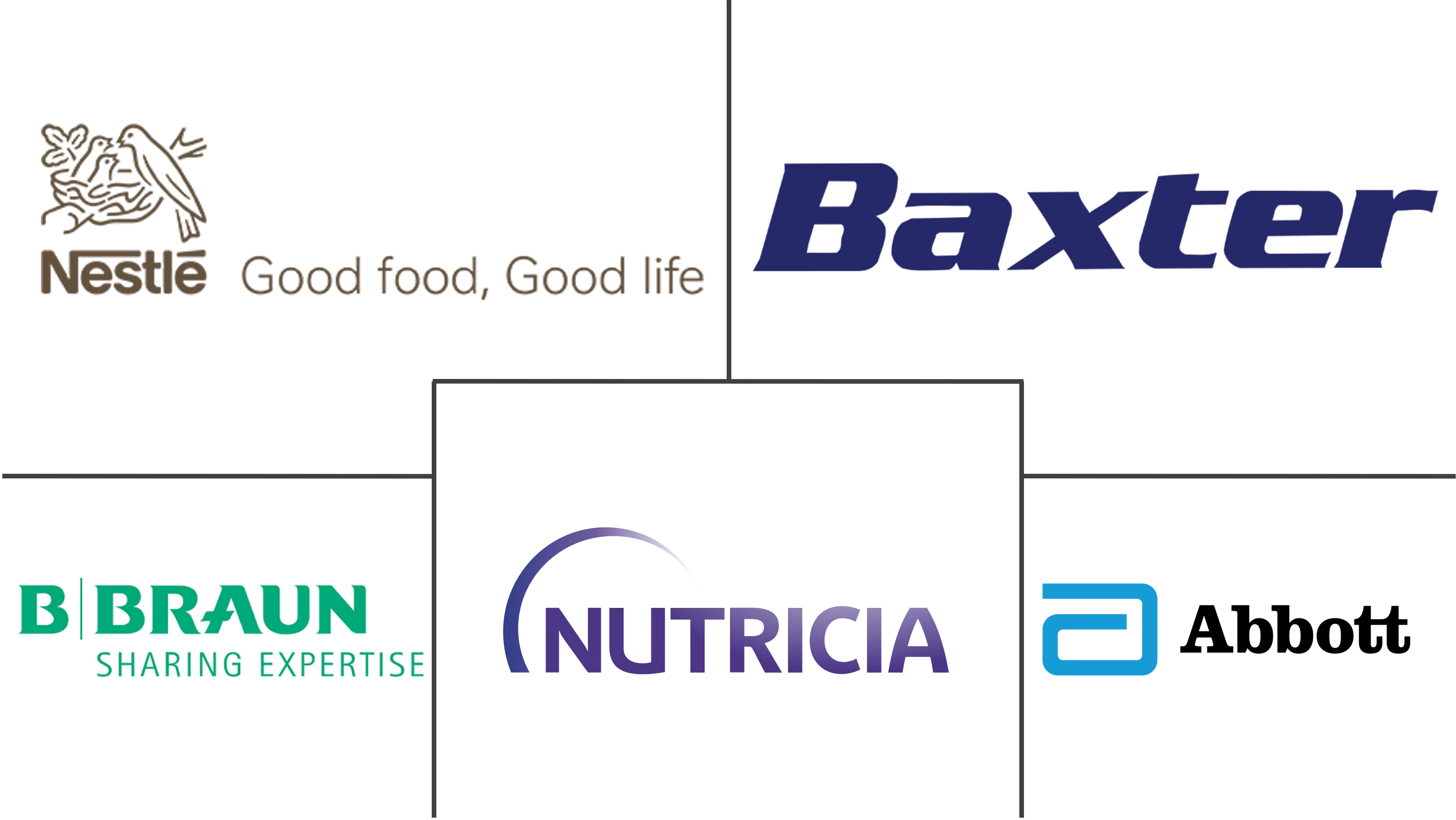Market Size of Asia-Pacific Clinical Nutrition Industry

| Study Period | 2019 - 2029 |
| Base Year For Estimation | 2023 |
| Forecast Data Period | 2024 - 2029 |
| Historical Data Period | 2019 - 2022 |
| CAGR | 7.10 % |
| Market Concentration | Low |
Major Players
*Disclaimer: Major Players sorted in no particular order |
Need a report that reflects how COVID-19 has impacted this market and its growth?
APAC Medical Clinical Nutrition Market Analysis
The Asia-Pacific clinical nutrition market is expected to register a CAGR of 7.1% during the forecast period.
COVID-19 significantly impacted the market studied in the initial phase as the patients affected with COVID-19 required nutrition and a proper diet to maintain their quality of life. For instance, an article published by PubMed depicted that an effective strategy, along with proper nutrition to prevent and treat COVID-19, was anticipated to improve nutrition to strengthen the immune system. Vitamin D has been recommended to prevent COVID-19, and an intake of 250 μg/day has been shown to raise serum 25(OH)D concentrations above 40-60 ng/mL (100-150 nmol/L). Low vitamin D3 leads to an increase in anti-inflammatory and immunoregulating interleukin 10 (IL-10) cytokines. It reduces the frequency of Th17 cells, which, in turn, decreases IL-17 and proinflammatory cytokine tumor necrosis factor-alpha (TNFα) production, decreasing inflammatory effects in the host. Thus, vitamin D deficiency is often found in patients with COVID-19. The Japanese diet closely resembles a "nutrient-dense dietary pattern", and it includes a lot of elements that guard against COVID-19 infection. People have become more aware and conscious of their nutritional intake in the post-pandemic scenario, which is anticipated to drive market growth in the coming years.
The major factors attributing to the growth of the Asia-Pacific clinical nutrition market include an increase in the prevalence of metabolic disorders and neurological diseases, a rise in the geriatric population in the Asia Pacific Region, and high spending on healthcare. For instance, as per the IDF 2021 report, in India, the number of people with diabetes was 74,194.7. Furthermore, as per the same source, the total diabetes-related health expenditure in 2021 was USD 8,485.8 million.
Dietary therapy is critical for normal growth and development and to prevent acute complications. It prevents long-term complications of the given disorder. A failure to follow specific dietary treatment can lead to complications and even death in individuals with metabolic disorders. Nutrition therapy for patients with inherited metabolic disorders is lifelong. The management of patients with many inborn errors of metabolism requires a multidisciplinary approach that combines both nutrition and medical management. In these disorders, nutrition therapy is a critical component of the management to prevent acute complications, such as metabolic decompensation, and to prevent long-term complications of the given disorder.
Vitamin D deficiency is one of the major crises faced by many people and is likely to cause serious illness. The presence of competitors, mergers, acquisitions, and product launches is anticipated to boost market growth as these activities increase the availability of products and raise competition. For instance, in March 2021, Royal DSM, a purpose-led global science-based company in nutrition, health, and sustainable living, launched ampli-D, a fast-acting form of vitamin D for dietary supplements in Australia. The availability of DSM's ampli-D in Australia, the first market for its launch, follows regulatory approval by TGA for its use in dietary supplements that do not require a doctor's prescription.
Most metabolic syndromes result in situations where the body lacks the capability to synthesize non-essential molecules, like vitamins and amino acids, and several molecules involved in metabolic pathways. Most of these conditions can be managed only with the supplementation of one or two nutrients. All these factors are anticipated to boost the market growth. However, there are a few factors that may restrain market growth, such as the heterogeneous nature of government coverage/reimbursement across countries.
